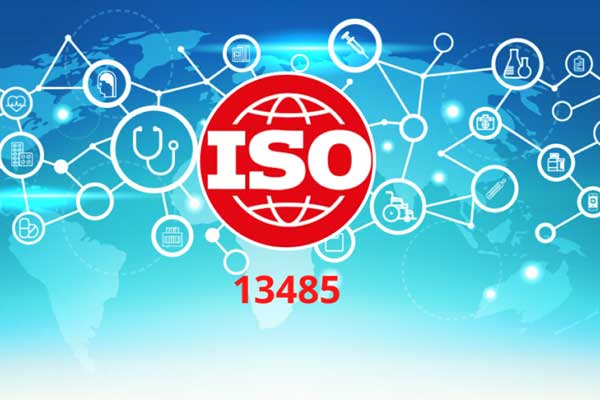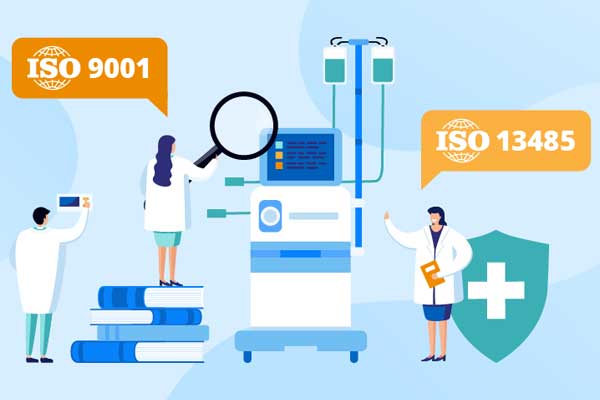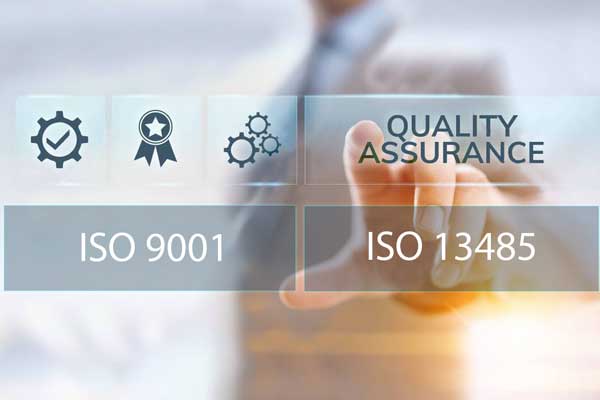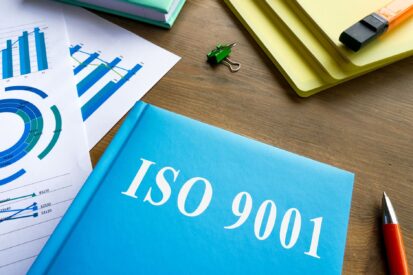The Quality Management System (QMS) supports quality management during the entire production cycle of a device, software, product or service. With both ISO 13485 and ISO 9001 talking about quality management, it may become confusing to understand the difference between them. In this article, we list the similarities and differences between ISO 13485 vs ISO 9001.
What is ISO 9001?
ISO 9001 is an international standard developed for the creation, implementation and maintenance of a QMS that aims to increase the quality of products and services that an organisation produces in addition to improving their client satisfaction rates. ISO 9001 can be followed by any organisation, regardless of the industry, size, complexity or scope. The standard has undergone several revisions, with the latest revision taking place in 2015
What is ISO 13485?
ISO 13485 is the international standard for quality management that aims to support the medical device life cycle. The standard underwent its last revision in 2016. The standard was built taking into consideration the need to ensure safety during all stages of production of a medical device life-cycle, including its design, manufacturing, production, operation and disposal.

Similarities between ISO 13485 and ISO 9001
There are many similarities between both standards, including the following:
- Risk assessment: Both standards emphasise the importance of incorporating risk management into the early stages of the product life-cycle, namely in the design and production stages. The rationale behind incorporating risk management is that developing customised and individualistic risk management strategies help to minimise and mitigate the consequences of all potential risks.
- Customer focus: ISO 13485 and ISO 9001 focus on customer satisfaction. Both standards urge organisations to create processes that help categorise customer requirements so they can be reflected in the final product.
- Quality improvement model: Although ISO 9001 and ISO 13485 do not have the same structure, they both utilise the Plan-Do-Check-Act (PDCA) cycle as their foundation. This foundation encourages a continuous quality improvement model consisting of four sequential logical steps repeated for continuous enhancement of a product or a service. Essentially, both standards encourage organisations to constantly evaluate their progress to uncover hidden risks and opportunities that would otherwise be unnoticed.
- Employee competency: To achieve compliance with both standards, organisations must ensure that their employees are competent enough to carry out their assigned tasks. To evaluate adequacy in competency, both standards recommend that a gap analysis is conducted to identify any competency or skill gaps, going on to provide specialised training so as to enhance competency. Additionally, ISO 9001 recommends top management showcase leadership commitment to enhancing their staff’s competency levels. This can be done by clarifying doubts related to roles, responsibilities or work instructions and providing adequate resources to support the employees in performing their tasks.
Also read : “what are ISO 9001 principles?”

Differences between ISO 13485 and ISO 9001
Generally speaking, ISO 9001 can be utilised by any industry, but ISO 13485 is exclusive to industries that produce medical devices or software as a Medical Device (SaMD). Despite the many similarities, there are some significant differences between ISO 13485 and ISO 9001, including:
- Documentation control: In comparison to ISO 9001, ISO 13485 is described as document-heavy. This means that the standard is more demanding in terms of documentation and requires organisations to adhere to many regulatory documents such as product specifications, description of production processes, and installation and maintenance processes.
- Distribution of duties: ISO 9001 allows organisations more liberty while distributing duties. This means that business owners do not have to be tied to specific managers when they are delegating responsibilities for quality control. However, there is a requirement for a specific employee from the management to be specifically delegated responsibility for the QMS.
- Risk management: The ISO 9001 standard allows business owners more liberty when it comes to risk management. In contrast, ISO 13485 emphasises the creation of documents that are specific to risk management. The standard requires that medical device manufacturers not only maintain records of risk management processes during medical device production but also analyse and update these documents. Additionally, the standard mandates that manufacturers evaluate customer complaints and implement an after-sales supervision process to ensure that products conform to their declared quality.
- Quality requirements: ISO 9001 believes that the hallmark of a quality-oriented culture is customer satisfaction. In contrast, the focus of ISO 13485 is on the safety of customers in supplementation to create a quality-oriented culture. Hence, ISO 13485 establishes specific safety requirements that an organisation must adhere to during production. Examples include sterility during the assembly and packaging of each device.
- Resource management: According to both standards, resources are defined as various equipment, personnel or infrastructure that are required to create high-quality products. ISO 13485 mandates that the whole production cycle of medical devices has to be documented, including specifications such as the cleanliness of personnel clothing, sterility of the production environment and containment of contaminated objects.
Conclusion
ISO 9001 applies to organisations of any industry, but ISO 13485 is specific to medical devices. Therefore, ISO 13485 is more document-heavy and obligation filled. If you are planning to get an ISO 9001 Certification in Australia, you can contact us








Users Comments
Get a
Quote